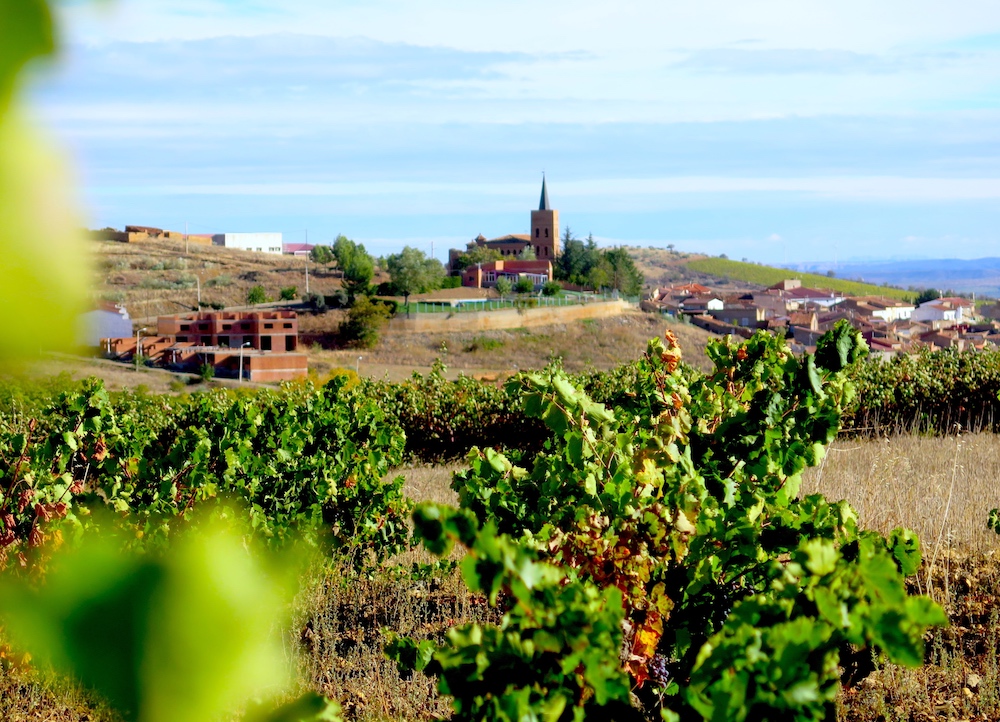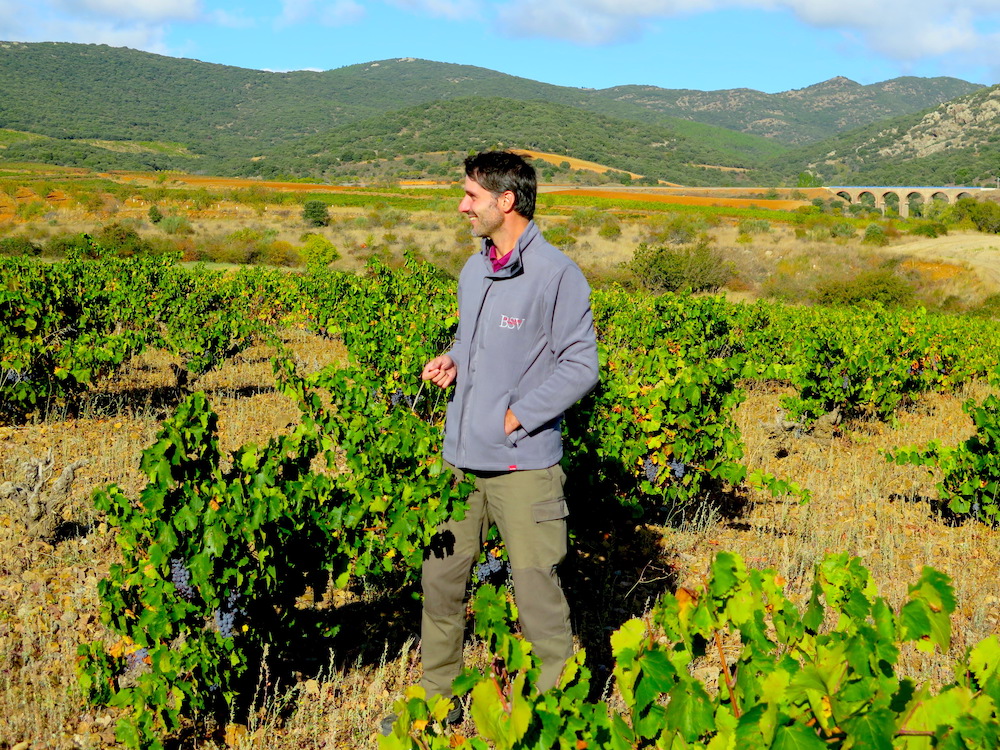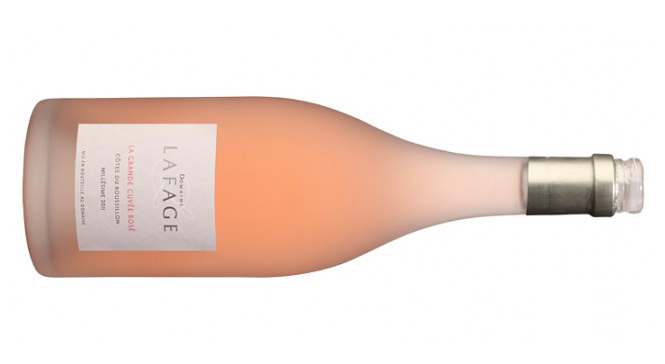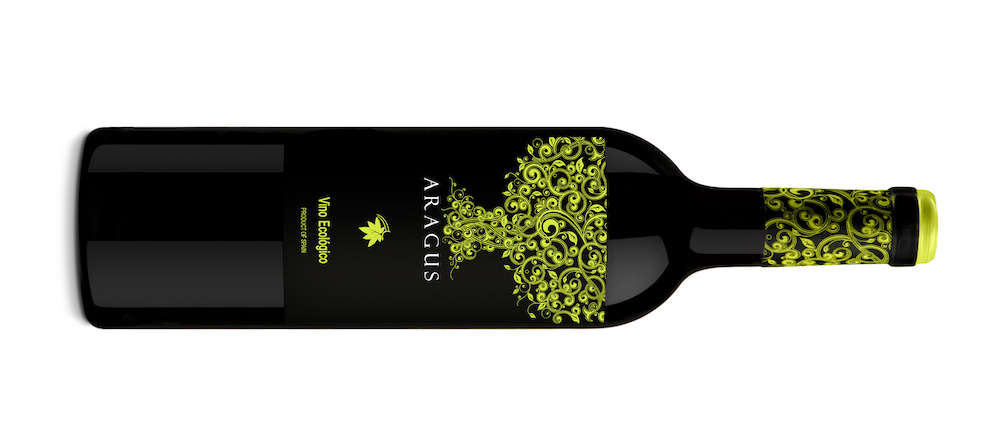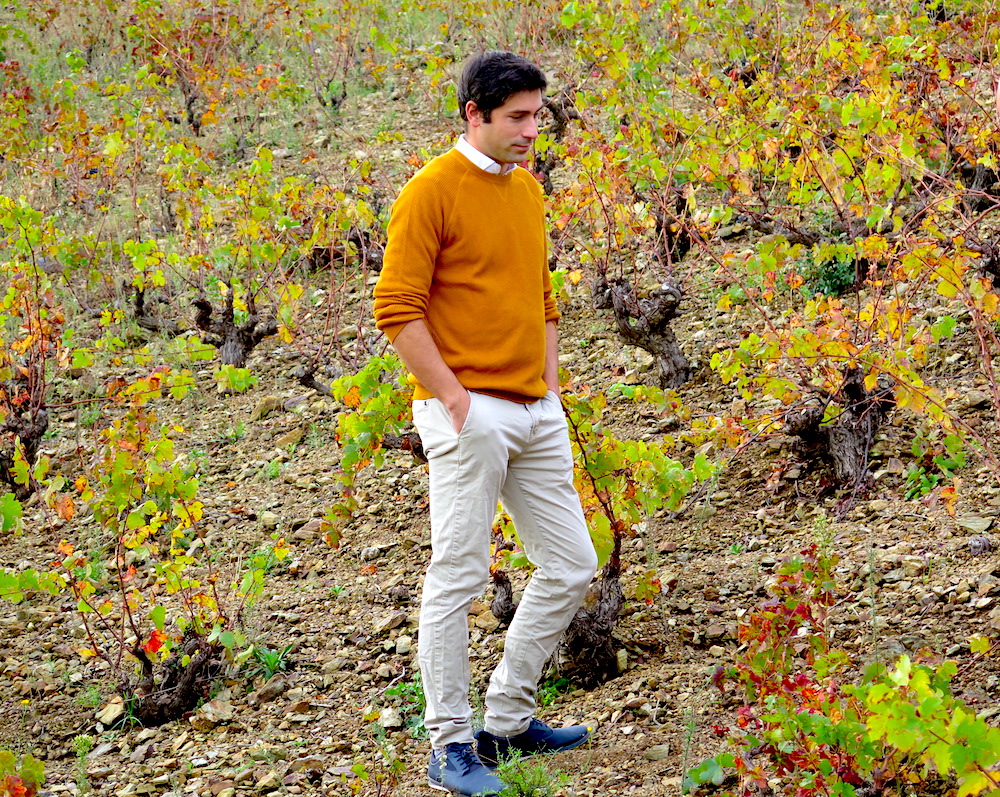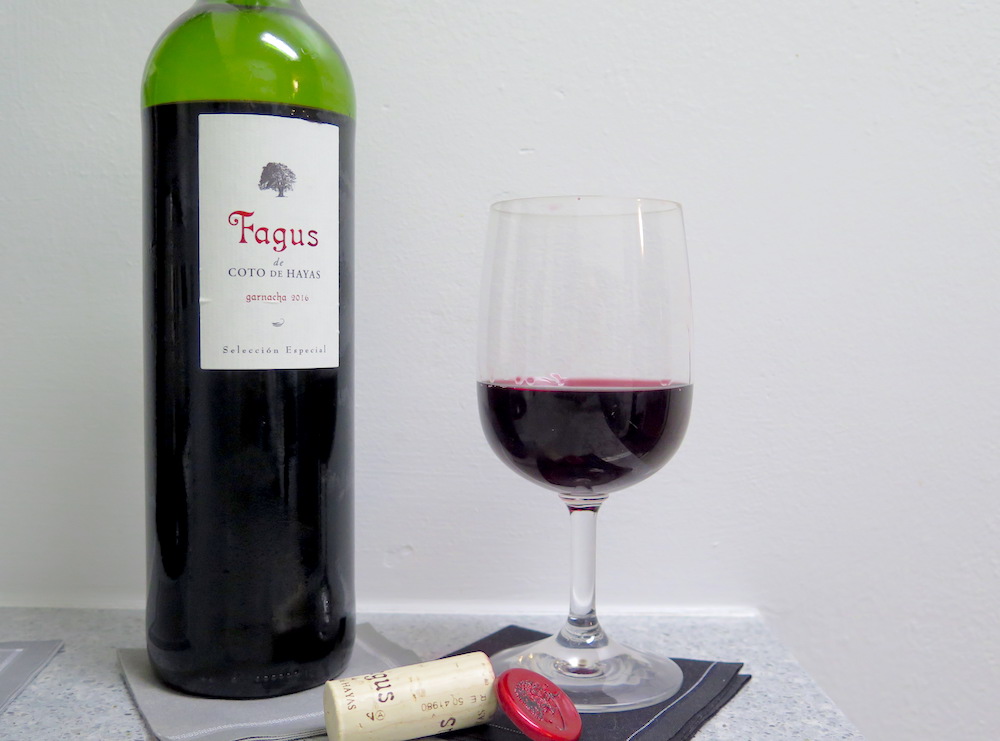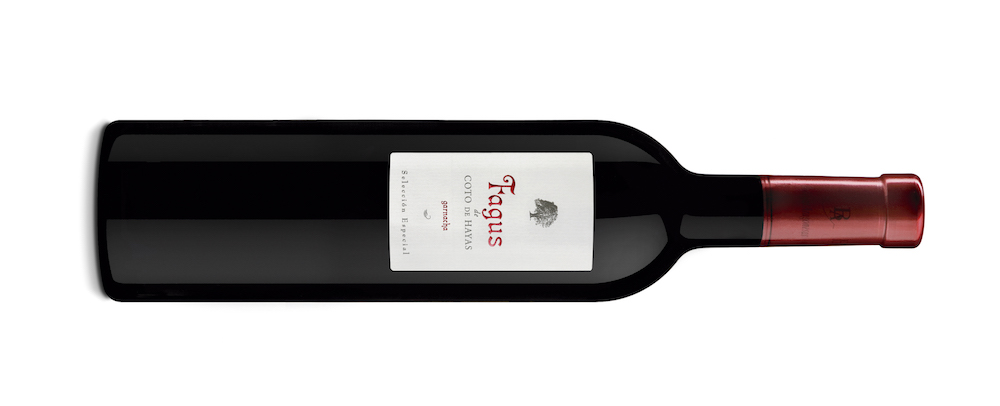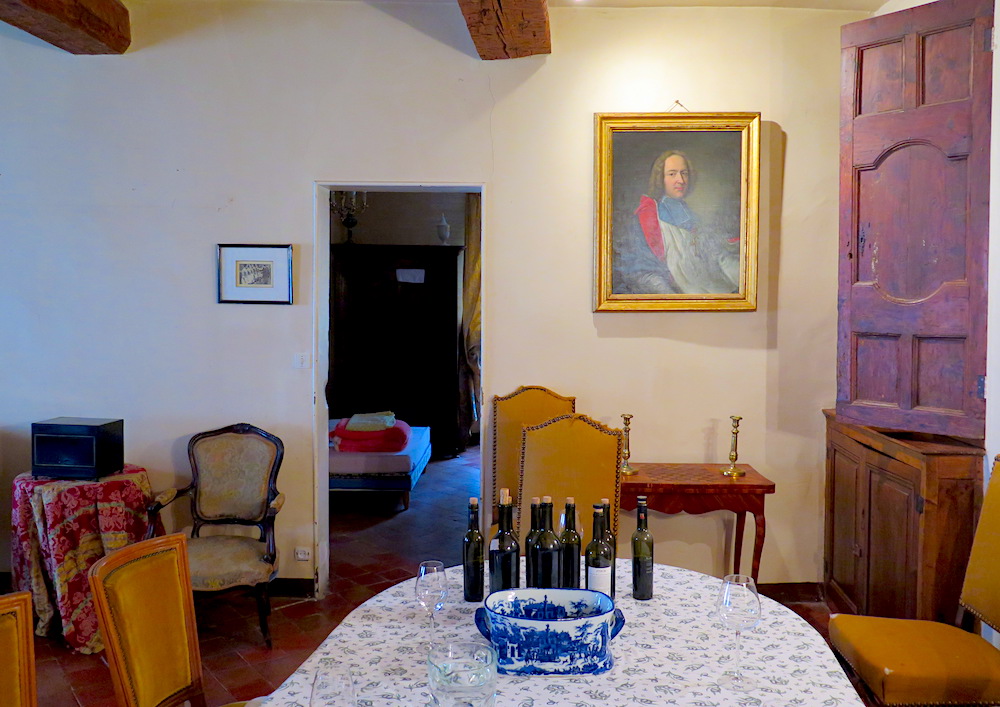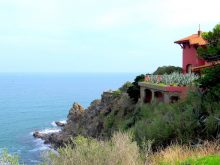Some years ago, in celebration of his birth year, my godfather received a 1909 vintage Grand Vin Château Margaux as a gift from Malcolm Forbes—and it was my good fortune to be in good company when that bottle was opened and shared.
Alas, I was young—and apart from the sense of occasion (and the empty bottle, which I kept), what did I retain from the remarkable wine that I sipped? According to the gatekeepers at Château Margaux, “This wine was light and elegant in its youth, and has not lost any of its qualities today. The nose is deep and complex, the palate elegant and balanced, the finish smooth and delicate.” Yes, that sounds about right.
A more recent return to Spain and the South of France provoked an outpouring of Proustian recall as I wandered happily alongside two knowledgeable guides from Wines of Garnacha. One of the most-widely planted grapes in the world, Garnacha (or Grenache) has its origins in Aragón in Spain where it gravitated to the eastern part of Spain and the South of France in the region known as Catalonia. Often used for Côtes du Rhône-style blends of Grenache, Syrah, and Mourvèdre (aka GSM), Garnacha has been stepping into the spotlight as a monovarietal—particularly in the hands of the innovative winemakers of the Garnacha region.
As Eric Aracil of Roussillon Wine Council (CIVR) states, “Grenache is an open window on the terroir”—and one of the many joys of tasting the wines of the region is in appreciating their diversity. Few other grapes reveal the essence of their soils as distinctively as Garnacha. Sometimes considered the Pinot Noir of southern Europe, Garnacha showcases a broad range of terroir due to its adaptive ability and hardy character.
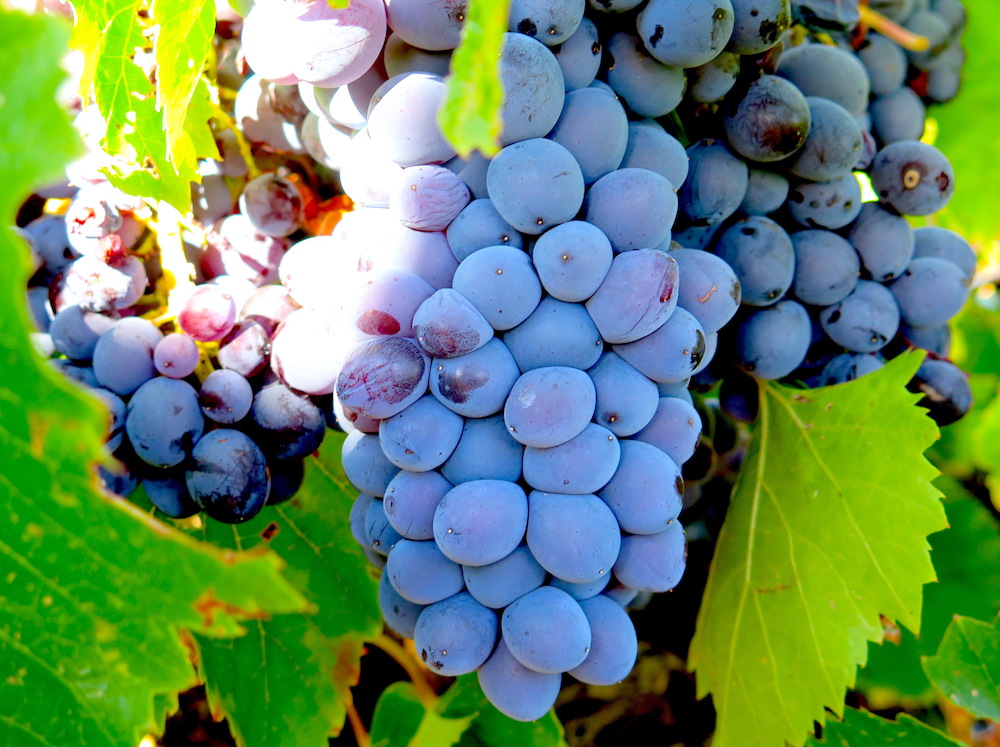
The grapes of Cariñena DO, which is one of the oldest protected growing areas in Europe (photo by ©MRNY)
Widely appreciated for its versatility, Garnacha produces both red and white varieties, as well as a grape known as gray and another known as hairy Grenache, so named for its hirsute leaves. And furthermore, as one winemaker stated, “Garnacha arrives with perfect acidity at harvest.” In short, what’s not to love about Garnacha?
Oenophiles seeking a change from Chardonnay might consider Garnacha Blanca from the Terra Alta DO (Designation of Origin) in southern Catalonia, which produces 30% of the world’s white Garnacha. These are exemplary whites, notable for their creamy texture and bright flavors, with a flinty streak of minerality from the region’s limestone soils. In the words of one long-term Catalan, “Garnacha Blanca is specific to the region. Plus, it’s got personality—and good taste.”
In the Roussillon region of northern Catalonia, Grenache has been employed extensively for the vins doux naturels (fortified sweet wines) of Banyuls, which are beloved for their notes of coffee, caramel, almond, tobacco, and dried fruits.
What you soon realize about Garnacha is the manner in which this versatile grape offers a connective narrative for a captivating culture—as well as exemplary wines. Throughout the nine-day tasting odyssey, we sampled more than 270 wines from the region—and, in all honesty, it would be a pleasure to serve the majority of them in my own home. Many of the wines from Spain were particularly well-priced: the sort of “bang for your buck” bottles that emerge victorious in blind tastings. The eight wines listed below are but a short list of the many for which I would have happily checked my luggage.
Las Moradas de San Martin Albillo Real: For more than 900 years, Garnacha has been grown in the hills around San Martín de Valdeiglesias, west of Madrid—and at this organic winery, Garnacha remains the signature grape. Named for a treatise by Saint Teresa, Las Moradas de San Martin cultivates the artistic link between viticulture and literature with a focus on traditional methods such as hand-harvesting.
In keeping with a commitment to local traditions, Las Moradas is recovering Albillo Real, a grape celebrated for its subtle floral perfume and high viscosity, which confers smoothness to wines. And therein lies the abundant appeal of this pale-straw organic beauty from vines planted between 1930 and 1940. On the nose are notes of pear and apricot, followed on the palate by an almost surprising salinity.
The bottle’s label features a quotation from Aragonese writer Óscar Sipán which reads Hay tantas maravillas en una copa de vino como en el fondo del mar (There are as many wonders in a glass of wine as at the bottom of the sea)—which in the case of this wine proves inarguable.
With an average price under fifteen dollars, this wine is a lovely introduction to winemaker Isabel Galindo whose passion and commitment to the region are revealed in her wines for Las Moradas de San Martin.
Lafage La Grande Cuvee Rose 2016: What you first notice is the seductive translucent bottle with its glass stopper, a bottle that shimmers with a rose blush beneath a silver neck collar: in short, a statement bottle that’s made for an entrance.
Fortunately, there’s equally as much elegance within Domaine Lafage La Grande Cuvée Rosé 2017 from AOP Côtes du Roussillon. Domaine Lafage encompasses nearly 400 acres of vines located south of Perpignan, the capital of French Catalonia in the heart of Roussillon. Organically farmed, the vineyards are comprised of vines well over 50 years of age—and, in fact, La Grande Cuvée Rosé 2017 derives from low-yielding vines with an average of 65-80 years of age.
Hand-harvested, the grapes for this blend of 70% Grenache (gray and black) and 30% Mourvèdre are grown in the foothills of the Pyrenees in soil of black slate and marble. In the glass, this pale pink beauty offers aromas of rose petals and muddled strawberries—yet there’s a pyramidal structure, not unlike fragrance, that reveals a delightful complexity. Layered and elegant, there’s length on the finish—a lingering sensation that you’ve been seduced by a professional.
Aragus Organic Wine: A sixth-generation Aragonese, Sofia González recalls harvest season in Campo de Borja where her grandfather kept a small vineyard of old vines for the region’s beloved rancio wines, which are aged outdoors in the sun in large glass carafes known as garrafes.
Often referred to as the “Great Empire of Garnacha,” the Campo de Borja DO stems from a viticulture heritage that dates from 12th-century Cistercian monks. Located northwest of Zaragoza, the region is home to 15 registered wineries and several large wine cooperatives.
At Bodegas Aragonesas, the winemaking team has access to more than 9,000 acres of vineyards, some of which are more than 100 years old. Founded in 1984, the winery produces numerous signature brands that highlight Garnacha’s vibrant character from organic fruit-forward wines to single varietals and aged reserva blends.
Harvested from organic vineyards, Aragus Organic is a well-balanced and juicy Garnacha from vines more than 50 years old. Deeply cherry-red in the glass with lambent hues of violet, there are lovely aromas of ripe black fruit, followed by a surrounding softness in the mouth and a silky finish. Served at 61ºF at 14% alcohol, Aragus Organic is as delicious as it is a bargain at less than ten dollars a bottle.
Domaine de La Rectorie Collioure Barlande 2015: One of the more picturesque vistas in the seaside town of Banyuls-sur-Mer is from the terraced vineyards of Domaine de La Rectorie, which form a sort of viticulture amphitheater above the turquoise bay. Owned by the Parcé family for the past century, the vines throughout the 75-acre winery are situated in the AOP Banyuls region in the eastern Pyrenees near Perpignan, France.
From a single vineyard of old vines that date to the 1930s, Domaine de La Rectorie Collioure Barlande 2015 is comprised of a classic blend of 60% Grenache noir and 40% Carignan for a well-balanced beauty befitting its name. Hints of licorice rise from this velvety red, which has been aged for 12 months in oak casks.
There’s a pleasing balance between the lightly floral nose and a concentrated structure that reveals currants and plums, with figs and black pepper on the finish. A richly-intense red with robust tannins, this bottle could easily be cellared for another five years.
Fagus de Coto de Hayas Garnacha 2016: Campo de Borja is the ancestral home of Garnacha—and at Bodegas Aragonesas, the regional style of Spanish Garnacha is elegantly rendered in this richly-intense red.
An exemplary model of Garnacha’s equipoise, Fagus is harvested from low-yielding vines with an average age of 45 years. Aged in new French oak for ten months, Fagus reveals brilliant ruby red hues in the glass alongside aromas of vanilla and nutmeg.
On the palate, the balance is impressive: sumptuous and plush, a mouthful of red fruits in soft, sweet harmony with a pleasing clove finish. At 14.5% (and with an average price around $25), Fagus is best served at 63ºF—and perfectly able to stand on its own, by the glass or by the bottle.
From one of the most-awarded wineries in the region, Fagus serves as a testament to the sense of respect for the terroir of Campo de Borja—and an excellent example of the distinctive properties of Garnacha.
Anayón Garnacha 2015: More than 700 years ago, the wines of Cariñena traveled with King Ferdinand I from Aragon to Nice. As the oldest town in Aragon, Cariñena has been associated with viticulture since the Middle Ages.
In keeping with Cariñena’s viticulture heritage, Grandes Vinos has sold more than 100 million bottles in 42 countries—such is the stellar reputation of the Cariñena DO, the oldest in Spain. In recent years, the region has been focusing on exceptional vintages from vineyards with a low yield. With a limited production of less than 2,000 bottles, Anayon Cariñena Terracota, for example, has been aged for 12 months in earthenware urns.
Equally impressive, Anayón Garnacha 2015 derives from vines grown in very stony soil with an average age of 75 years. This juicy and jammy youthful wine is redolent of wild strawberries and plums with hints of vanilla and caramel. Silky, smooth tannins are a signature of Anayón—and here, there’s that lovely balance of lushness and tension.
Aged for 11 months in French (and American) oak barrels, Anayón Garnacha 2015 is an elegant ambassador for the virtues of Cariñena.
Banyuls Grand Cru 2000 Cuvée Christian Reynal: In the Roussillon region of northern Catalonia, five of the fourteen AOP appellations are reserved for fortified sweet wines known as vins doux naturels (VDN), which were initially perfected in 13th-century Montpellier. In the Banyuls AOP, winemakers place their fortified wines in the sun in large glass vessels or barrels, allowing the wines to bake in the heat and, thereby, enhance the complex bouquet of caramel, mocha, toffee, almond, and tobacco.
Situated over the azure sea like an amphitheater, the terraced vineyards of Abbé Rous overlook the picturesque ports of Collioure, Port-Vendres, Banyuls-sur-Mer and Cerbère. With more than 750 vineyards spread over nearly 3,000 acres of vines, Abbé Rous is an ambassador for the pleasures of AOP Banyuls and AOP Collioure.

At Abbé Rous, the winemakers place their fortified wines in the sun in barrels, allowing the wines to bake in the heat and, thereby, enhance their complex bouquet. (photo by ©MRNY)
The vineyard’s noteworthy expertise is evident in Banyuls Grand Cru 2000 Cuvée Christian Reynal, which is harvested from vines grown in arid schist in the extreme south of France, where the Pyrenees meet the Mediterranean. In the glass, the wine reveals topaz reflections alongside aromas of roasted coffee beans and pralines with walnuts—aromas that become manifest on the palate as well, with a hint of spiced orange.
Beautifully balanced, Cuvée Christian Reynal serves as a pleasing reminder that a post-prandial wine can be as restorative as an apéritif—and particularly with cheese or dark chocolate. What a splendid indulgence at approximately $41 per bottle.
Domaine Puig-Parahÿ Cuvée Veuve Puig Parahÿ 1910: Widely regarded as the éminence grise of Roussillon’s celebrated vins doux naturels, Domaine Puig-Parahÿ has been connected to the Catalan soil of Aspres for more than 700 years—with regional antecedents reaching back to the 11th century. Following the decimation by phylloxera in 1878, more than 345 acres were completely replanted, whereafter the vintages of 1893 and 1896 became award-winners in Rouen and Paris.
Situated southeast of Perpignan between the Canigou mountain and the Mediterranean, the estate captures the apogee of oxidized wines known as rancio for their raisin and nut flavors. Domaine Puig-Parahÿ’s extraordinary cellar of AOP Rivesaltes Rancio encompasses more than a century of these fascinating wines, thereby enabling a vertical tasting that spans 100 years.
Upon reaching the 1910 Cuvée Veuve Puig Parahÿ, my memory unleashed and, provoked by aromas of dried orange and smoke that recalled my godfather’s home, I traversed the past. Nearly as dark as black coffee and slightly medicinal and very aromatic—and oddly alluring—the wine was silky in the mouth and I thought of my godfather’s predilection for snuff and for stewed prunes at The Athenaeum in London—and his love of digestifs such as Fernet-Branca with its notes of rhubarb and cardamom. There was a long, lingering finish of walnut and aged fruit of the sort he would purchase from Fortnum & Mason—and again, I saw my godfather, delightedly smacking his lips and declaiming, “Now, that’s the stuff.” It’s hard to argue with time in a bottle.

